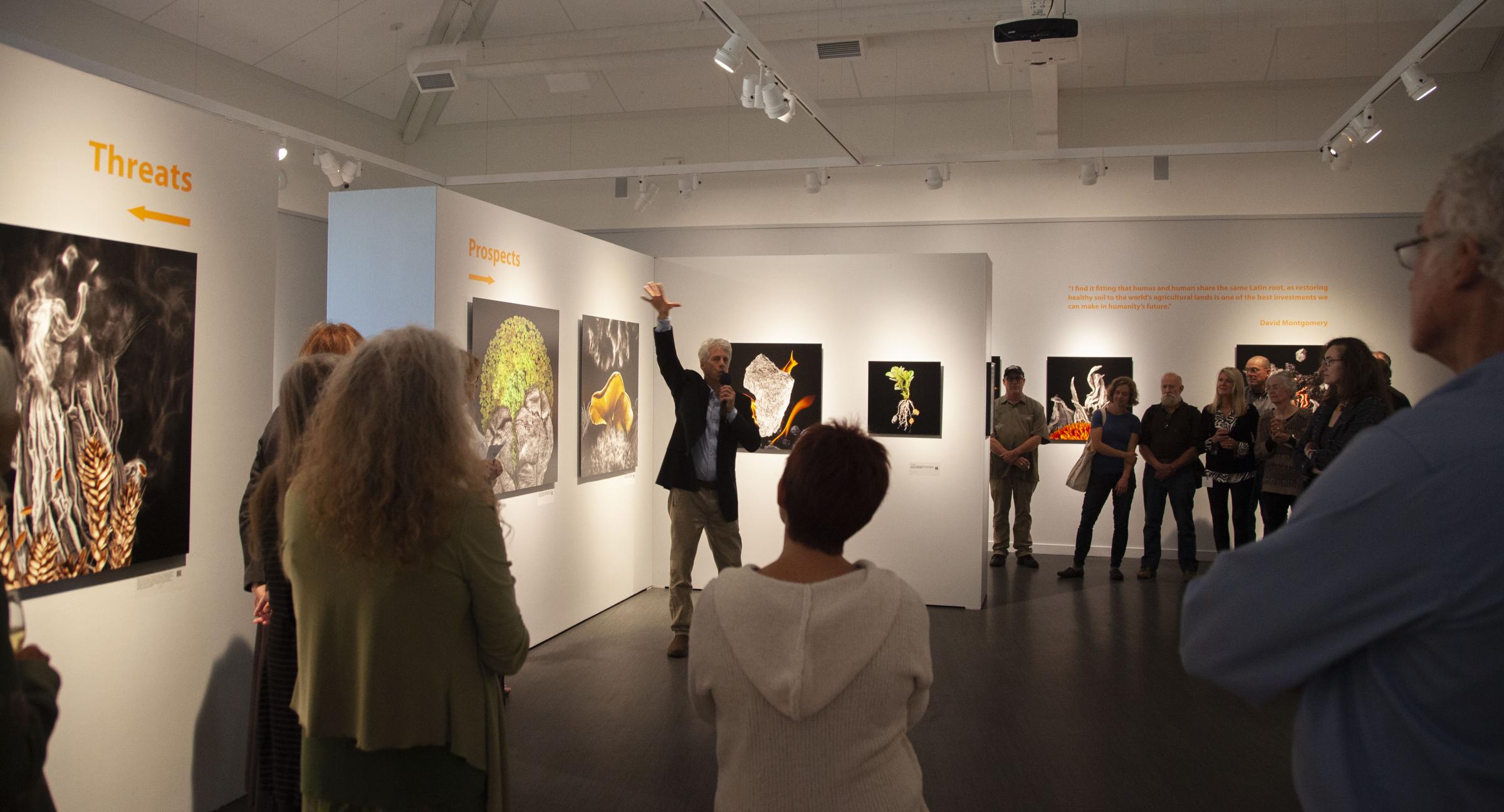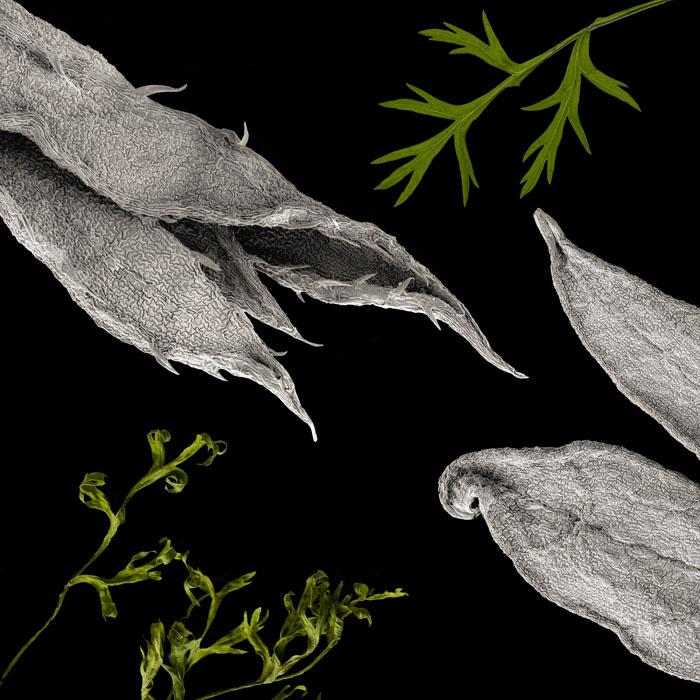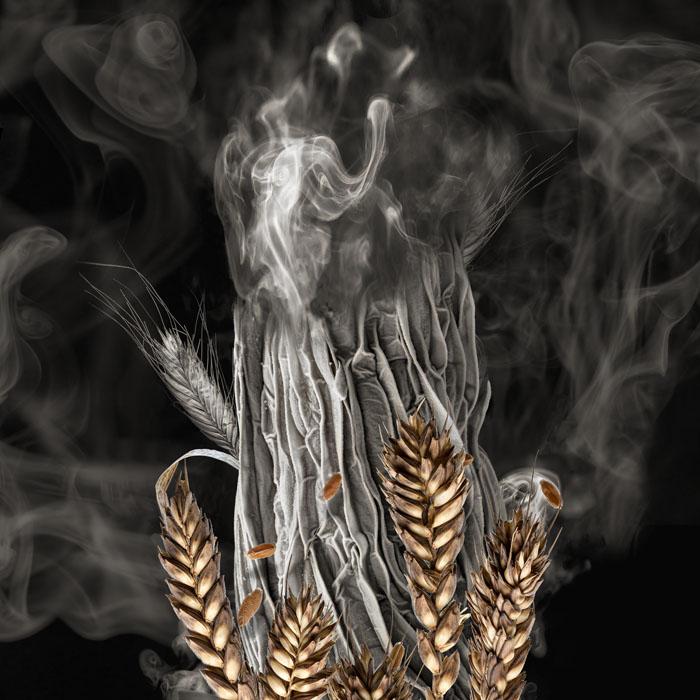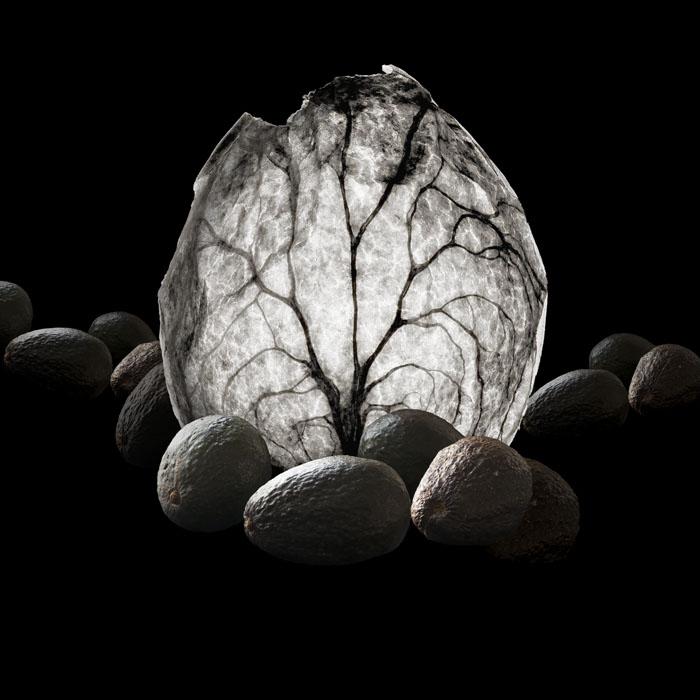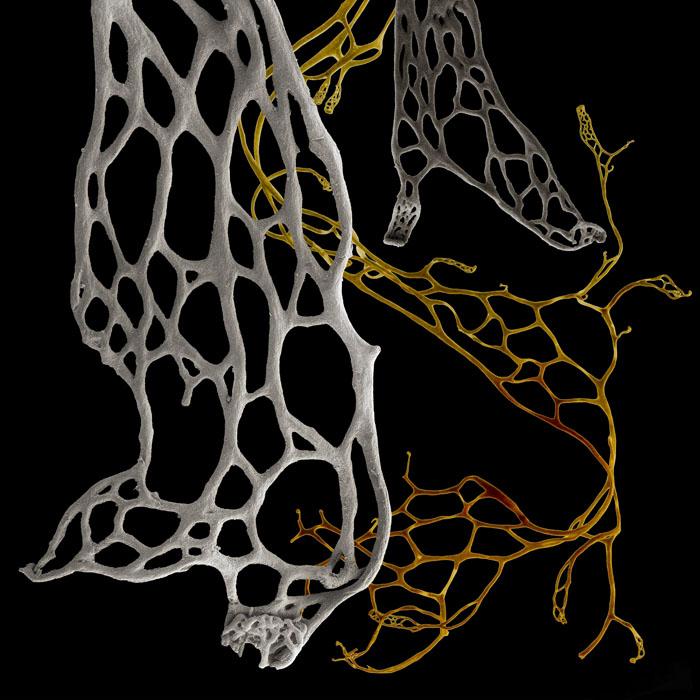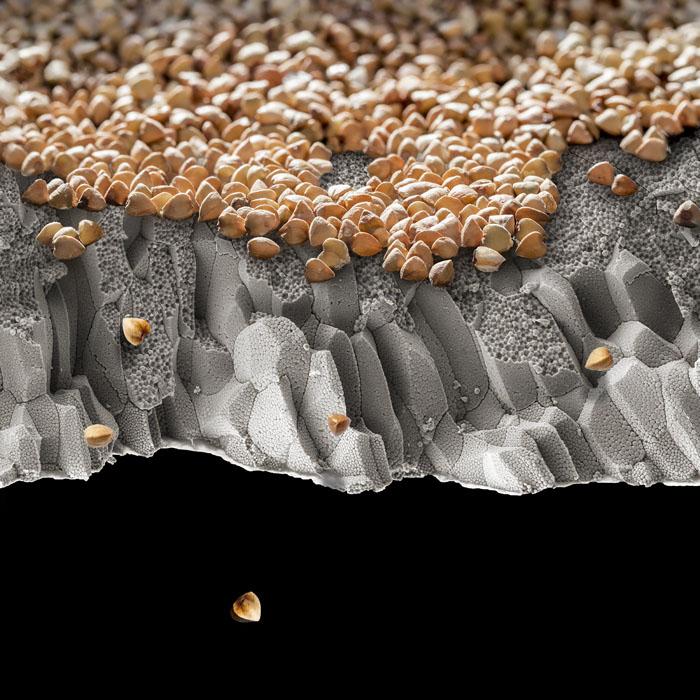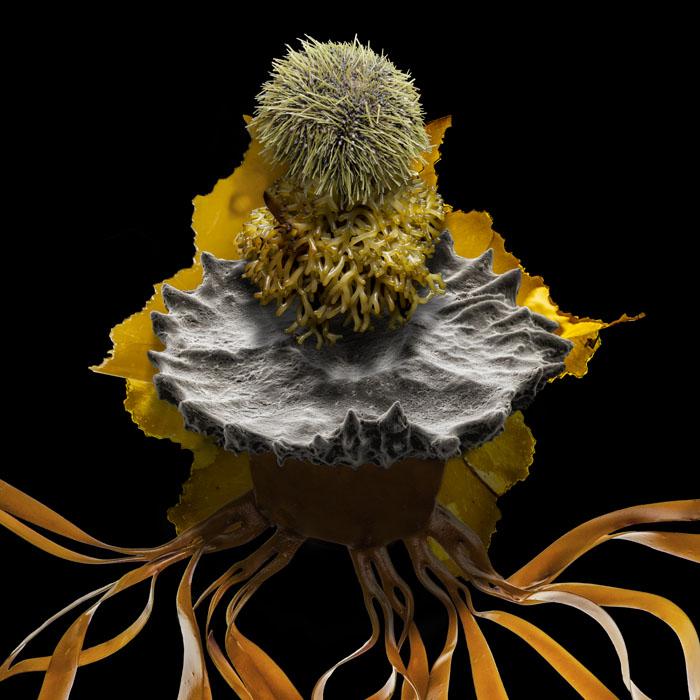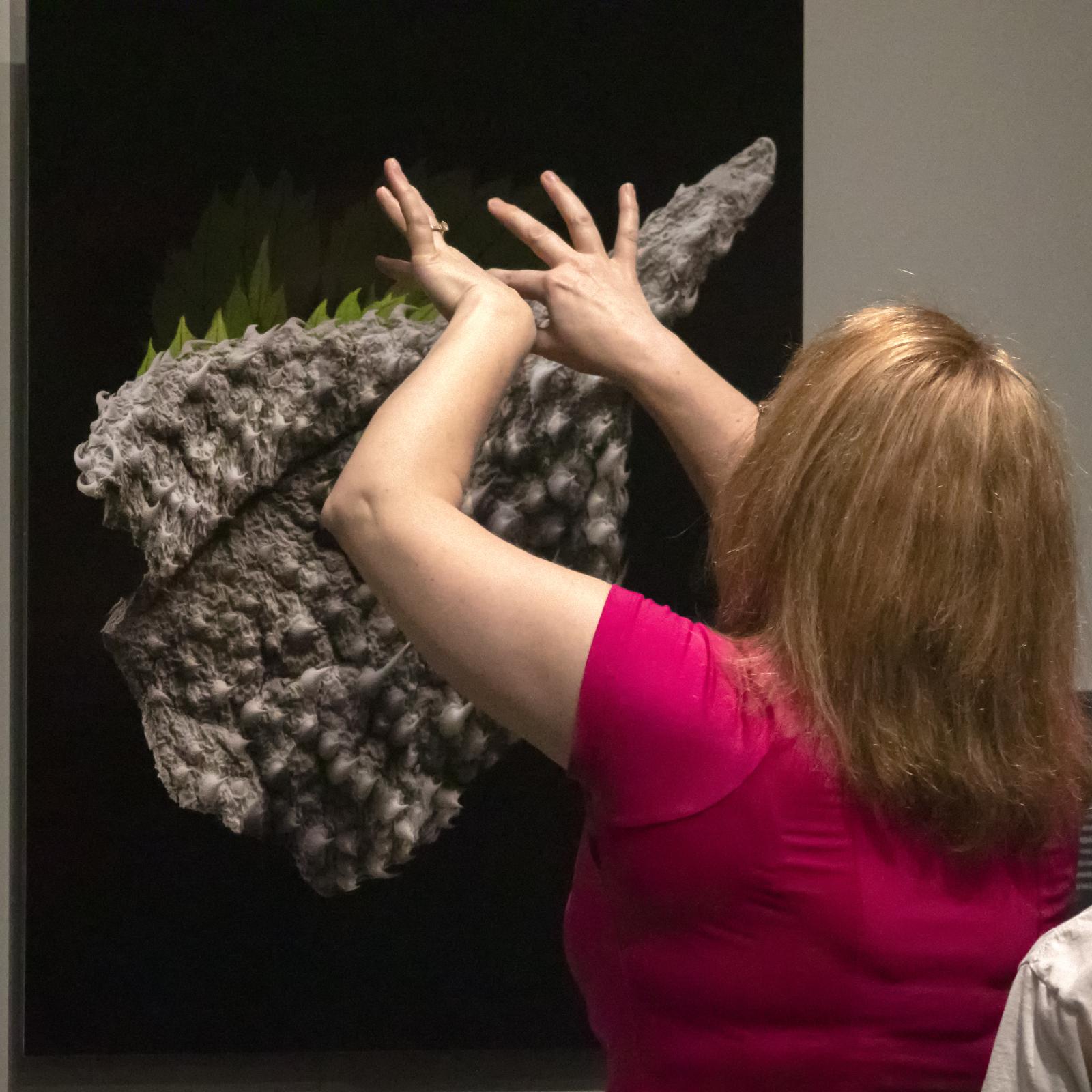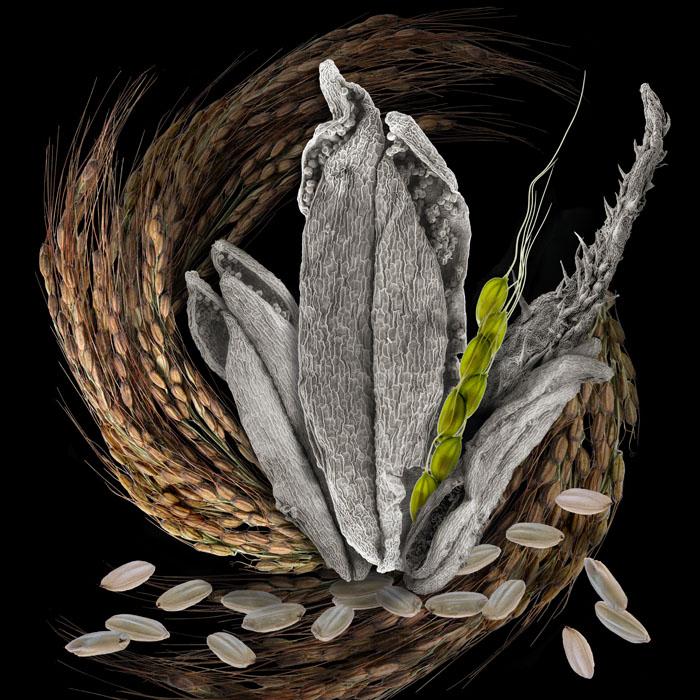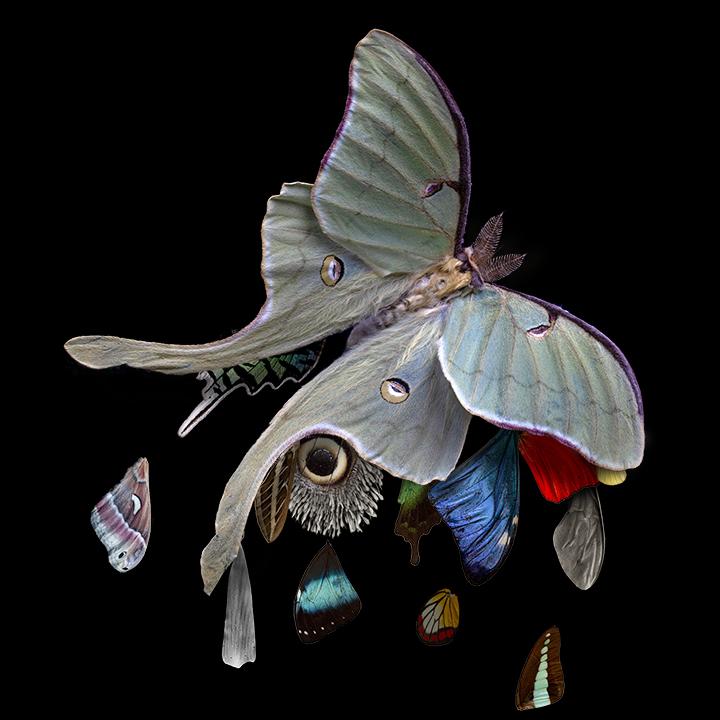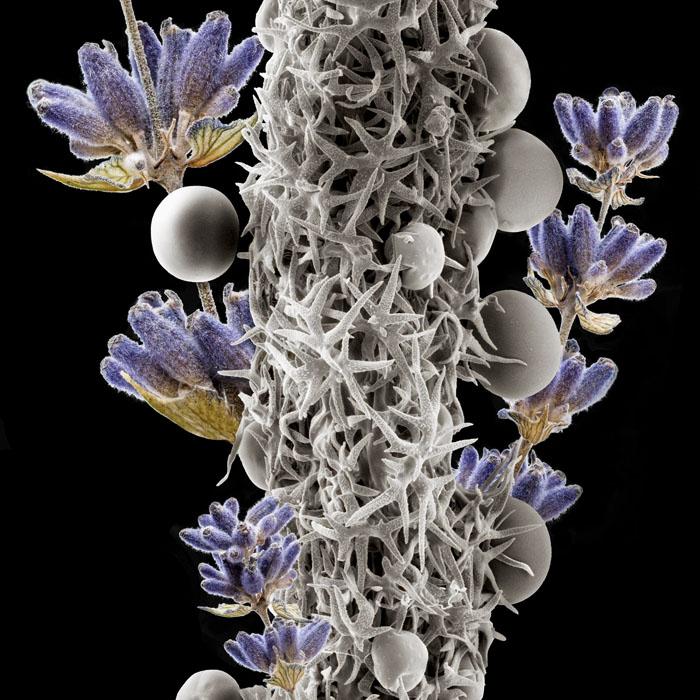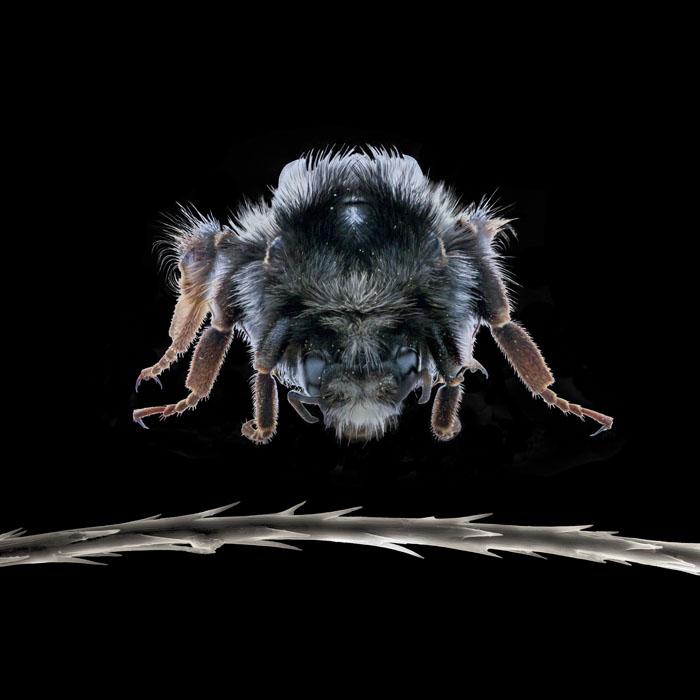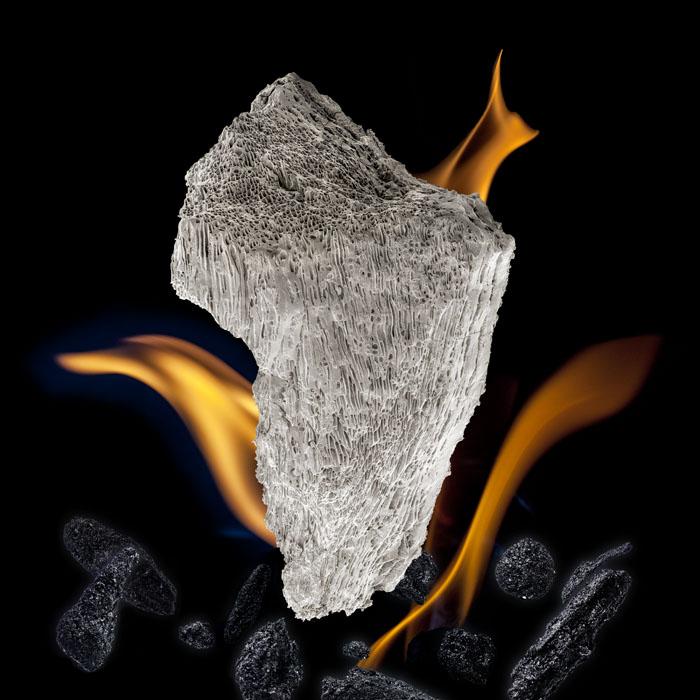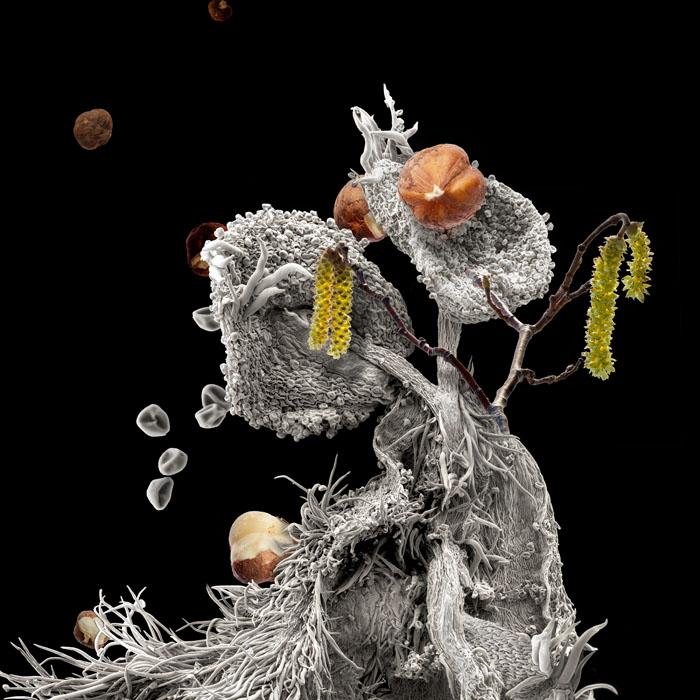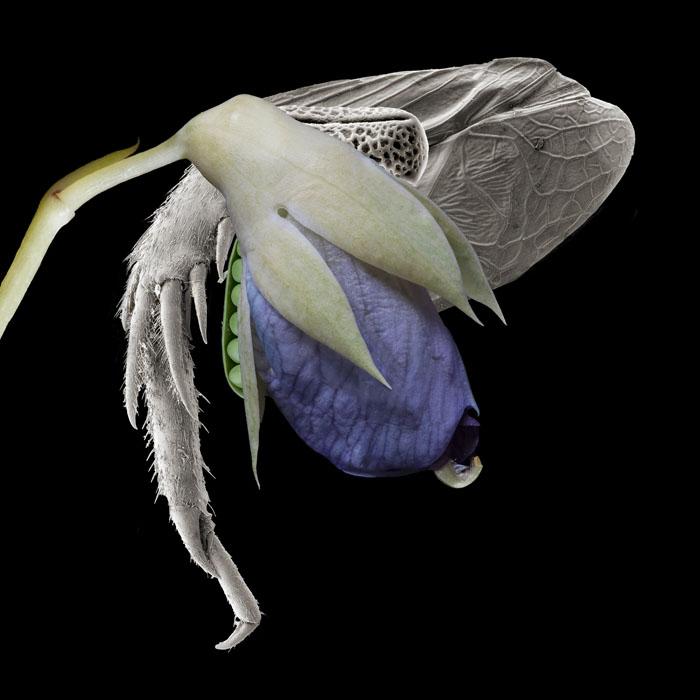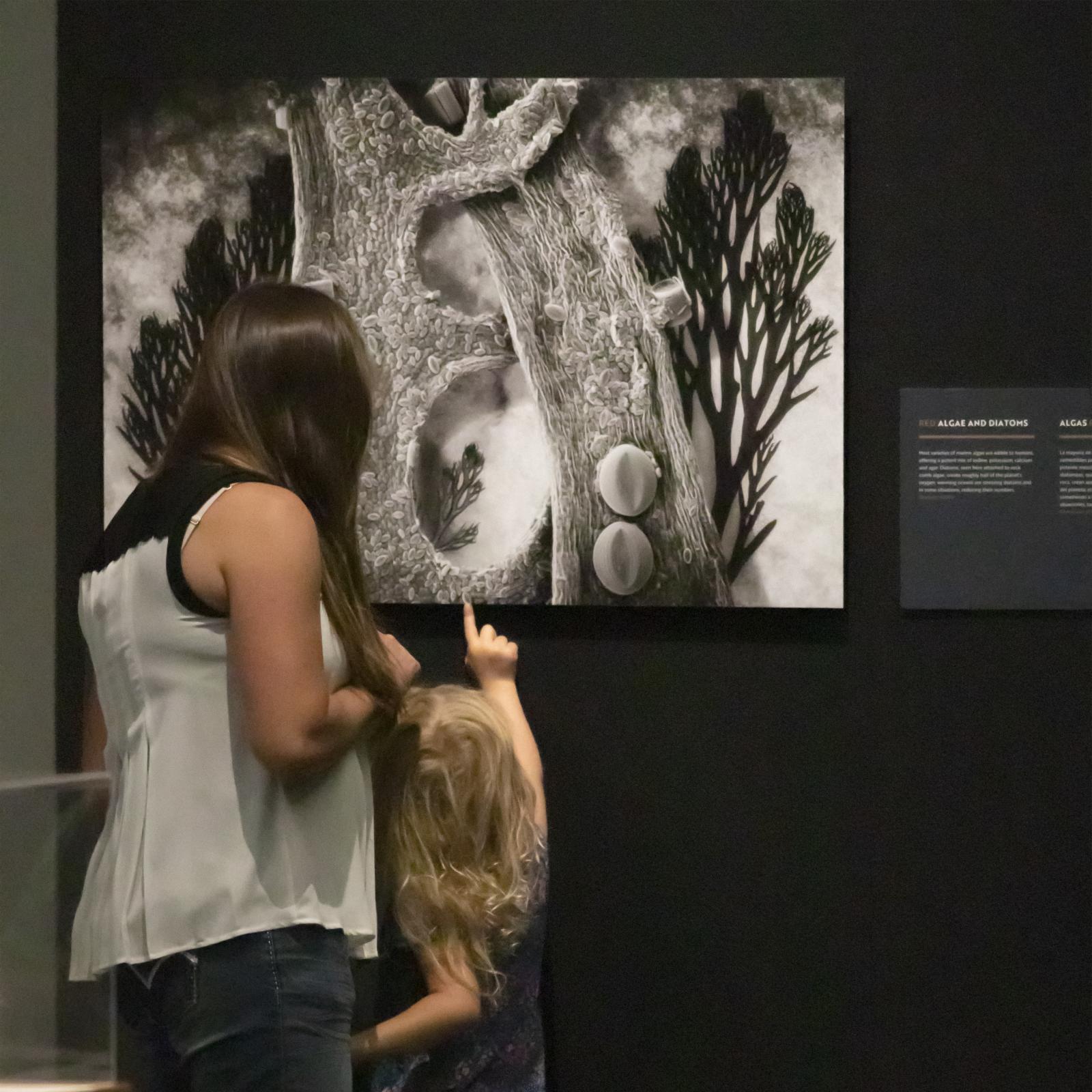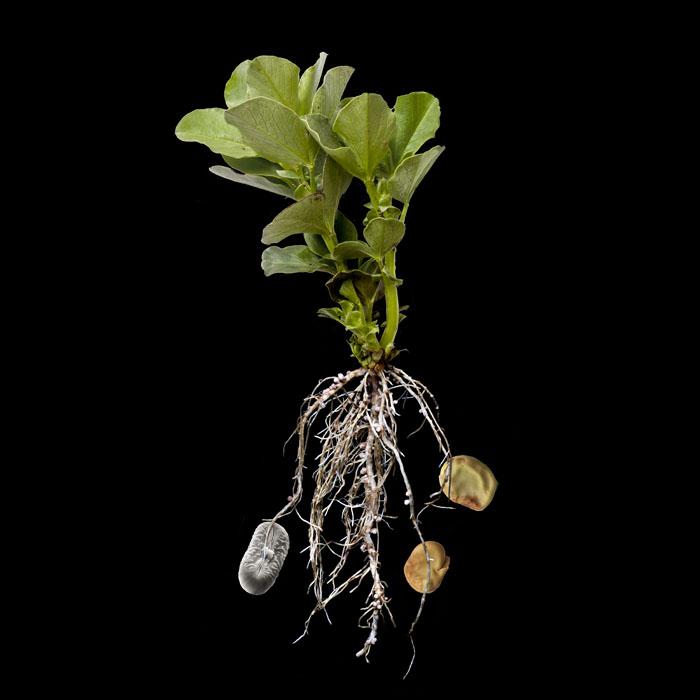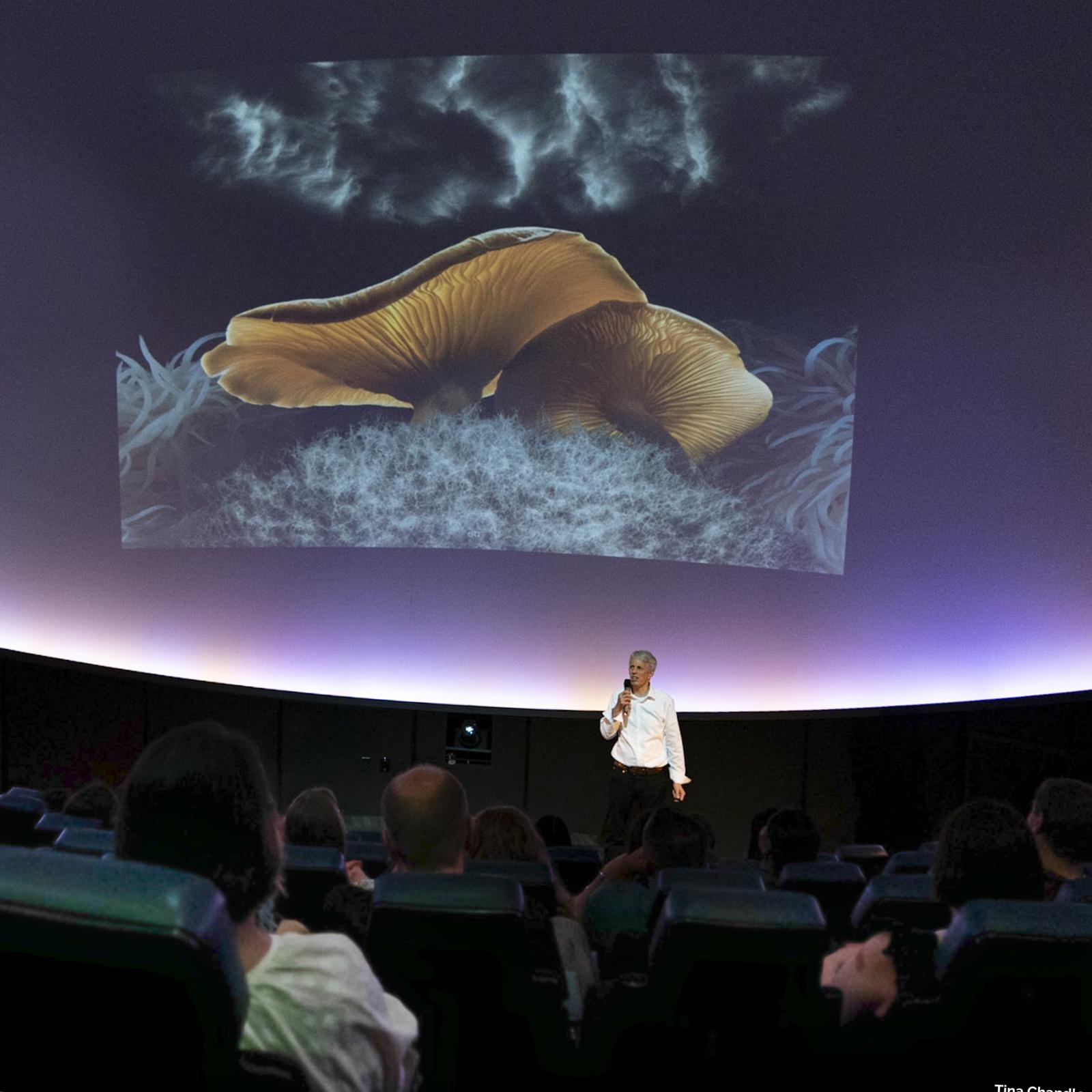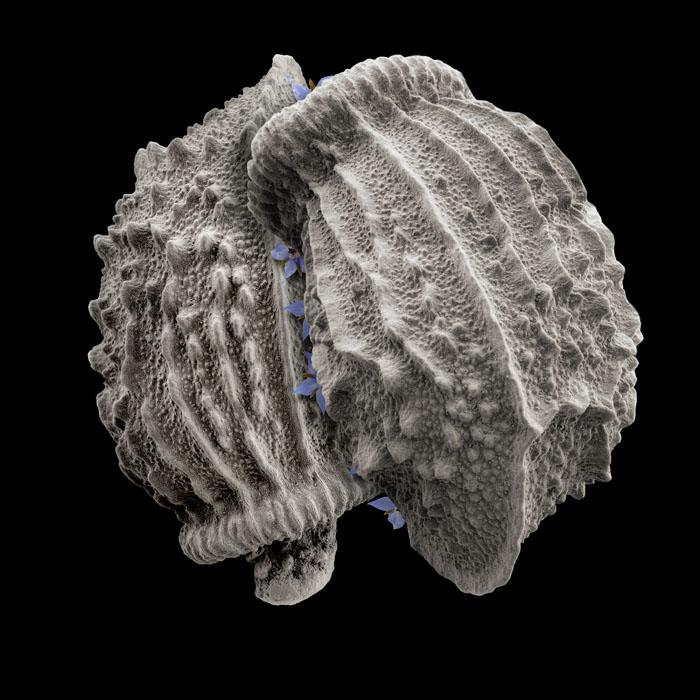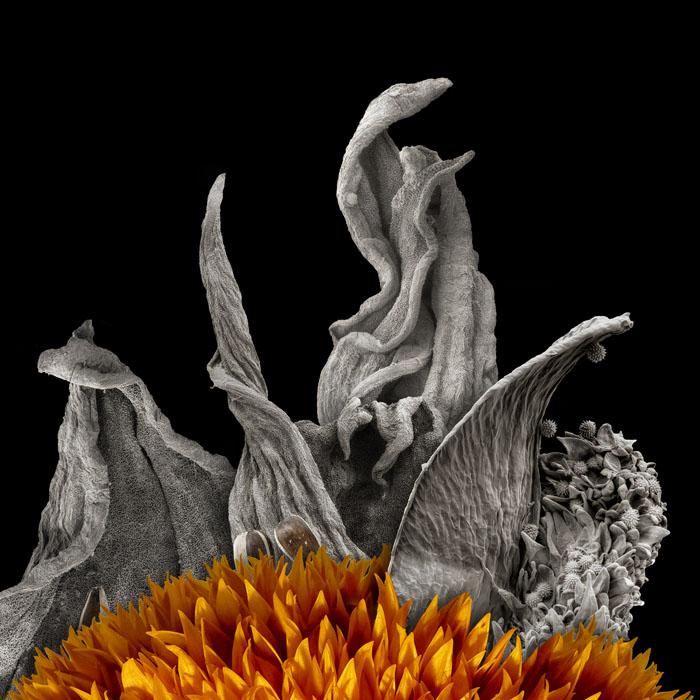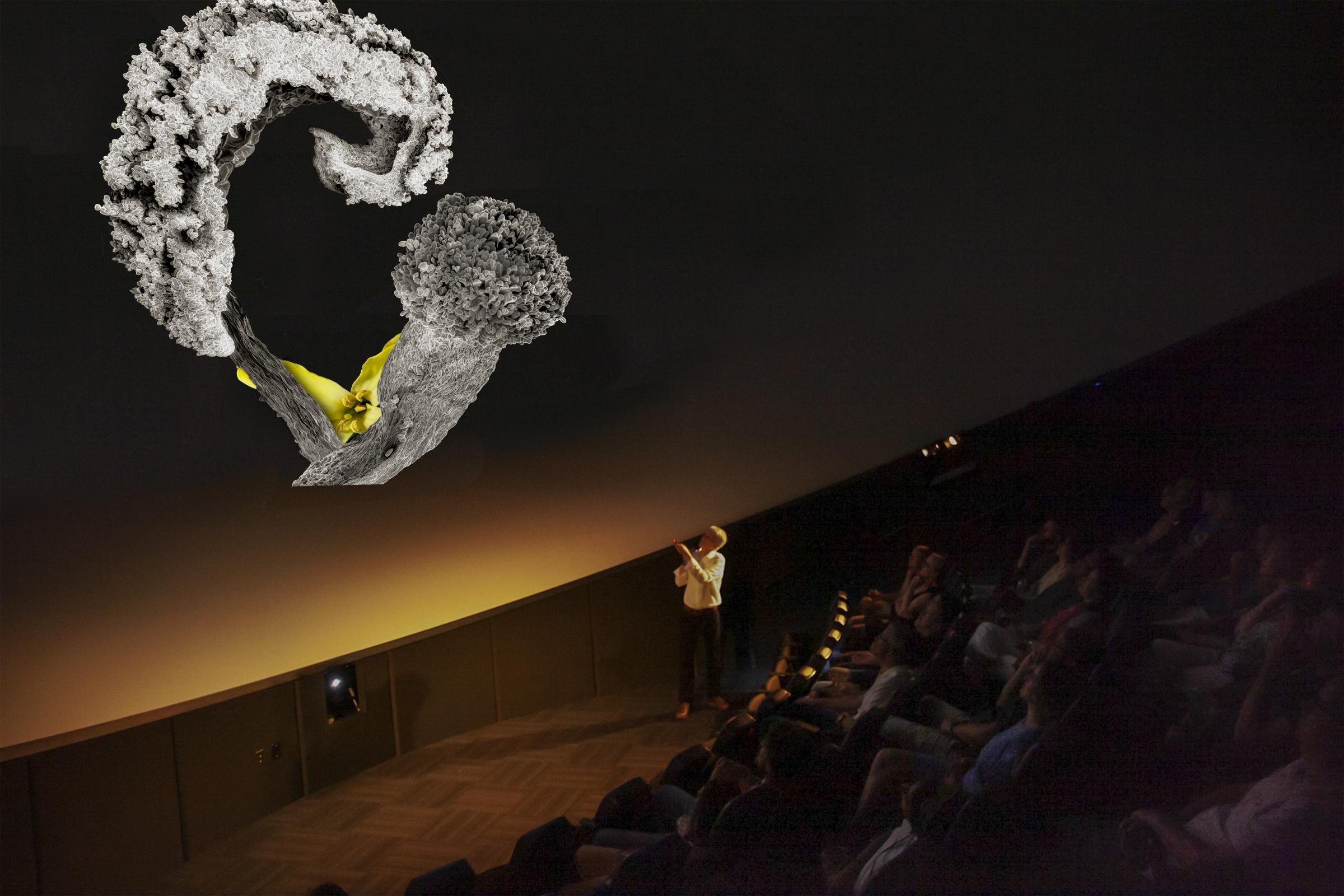FOOD PLANET FUTURE
View Exhibition Images
Fort Collins Museum of Discovery, Colorado
~Photo by Tina Chandler, City of Fort Collins, CO
~Photo by Tina Chandler, City of Fort Collins, CO
Stamford Art Museum, Connecticut
San Juan Islands Museum of Art
~Ranna McNeil, Photographer
~Ranna McNeil, Photographer
Food Planet Future/ The Art of Turning Food and Climate Perils Into Possibilities
When I sit down to eat a meal, I want to know that the food on my plate hasn’t been grown at the expense of the planet. It’s ironic that the mere act of feeding ourselves every day tethers us to agricultural systems that wreak chaos on ecosystems and the climate. But there are ways to grow food that heal the earth. These immense, portentous stories must be told, and I’m inspired to do so with art, by zooming in to the tiniest views of food that I can imagine. Awe and wonder feed the human spirit. They’re nourishment we need to help us face ecological breakdown, and to work to reverse it.
These images symbolize both the abundance and the threat that humanity has brought to the dinner table. I feature resilient, edible seeds and grains like millet and sunflower, which offer significant minerals and nutrients and can be a great source of plant protein. Reducing meat consumption in favor of these plant sources would have a huge impact on reducing greenhouse gasses. Staple crops like wheat, rice and soy are all threatened by human-caused climate change. Yields and nutrient values of these and other foods are decreasing, putting extra strain on developing regions.
While organic agriculture sounds to many like the optimum green practice for food production, that distinction belongs to an ancient, broad spectrum of practices called “regenerative.” These include no-till, perennial planting, soil amendments like biochar and compost, use of cover crops, rotational grazing of livestock, integration of tree crops with livestock, and more. The Rodale Institute maintains that if these practices were widely applied, all of the atmosphere’s excess carbon dioxide would be offset. We have the knowledge to bring our systems back into balance; all we need is leadership on every level to do so. This exhibition and forthcoming book outline these inspiring practices.
Images were made with a scanning electron microscope; they feature natural objects that are often smaller than a pinhead. DSLR macro photography completes the photomontages, to allow a surreal conversation between natural objects, and minute details of themselves. They are inspired by nature, and the artistic visions of Uelsmann, Blossfeldt, and Chris Jordan. Images are best seen at 40” x 40”.
When I sit down to eat a meal, I want to know that the food on my plate hasn’t been grown at the expense of the planet. It’s ironic that the mere act of feeding ourselves every day tethers us to agricultural systems that wreak chaos on ecosystems and the climate. But there are ways to grow food that heal the earth. These immense, portentous stories must be told, and I’m inspired to do so with art, by zooming in to the tiniest views of food that I can imagine. Awe and wonder feed the human spirit. They’re nourishment we need to help us face ecological breakdown, and to work to reverse it.
These images symbolize both the abundance and the threat that humanity has brought to the dinner table. I feature resilient, edible seeds and grains like millet and sunflower, which offer significant minerals and nutrients and can be a great source of plant protein. Reducing meat consumption in favor of these plant sources would have a huge impact on reducing greenhouse gasses. Staple crops like wheat, rice and soy are all threatened by human-caused climate change. Yields and nutrient values of these and other foods are decreasing, putting extra strain on developing regions.
While organic agriculture sounds to many like the optimum green practice for food production, that distinction belongs to an ancient, broad spectrum of practices called “regenerative.” These include no-till, perennial planting, soil amendments like biochar and compost, use of cover crops, rotational grazing of livestock, integration of tree crops with livestock, and more. The Rodale Institute maintains that if these practices were widely applied, all of the atmosphere’s excess carbon dioxide would be offset. We have the knowledge to bring our systems back into balance; all we need is leadership on every level to do so. This exhibition and forthcoming book outline these inspiring practices.
Images were made with a scanning electron microscope; they feature natural objects that are often smaller than a pinhead. DSLR macro photography completes the photomontages, to allow a surreal conversation between natural objects, and minute details of themselves. They are inspired by nature, and the artistic visions of Uelsmann, Blossfeldt, and Chris Jordan. Images are best seen at 40” x 40”.
BLUEBERRY RISE
This image in inspired by the 1968 Earthrise photo taken from space by William Anders. That iconic image launched the environmental movements decades ago. Today, agriculture is both a major source and potential healer of the climate crisis. Blueberries in Michigan are being impacted by seasonal shifts which bring new pests, harsh weather, and fewer pollinators. Blueberry seed: 300x
~Photo by Tina Chandler, City of Fort Collins, CO
This image in inspired by the 1968 Earthrise photo taken from space by William Anders. That iconic image launched the environmental movements decades ago. Today, agriculture is both a major source and potential healer of the climate crisis. Blueberries in Michigan are being impacted by seasonal shifts which bring new pests, harsh weather, and fewer pollinators. Blueberry seed: 300x
~Photo by Tina Chandler, City of Fort Collins, CO
CARROT LEAVES
Carrots, like so many vegetable crops, are impacted by increasingly wild swings of drought and flooding. Carrots grown in hot temperatures lose their flavor and texture, according to Australian researchers, where carrots are a major export crop. As for celestial solutions, astrobiology students at Villanova University found that carrots could grow successfully on Mars, (but transport costs could offset the benefits.) Leaves: 300x
Carrots, like so many vegetable crops, are impacted by increasingly wild swings of drought and flooding. Carrots grown in hot temperatures lose their flavor and texture, according to Australian researchers, where carrots are a major export crop. As for celestial solutions, astrobiology students at Villanova University found that carrots could grow successfully on Mars, (but transport costs could offset the benefits.) Leaves: 300x
WHEAT SPROUT ON FIRE
Wheat yields are decreasing with rising temperatures. At the same time, nutrient content will decrease in a hotter climate, a burden for developing nations. Crops are also threatened by drought.
Wheat yields are decreasing with rising temperatures. At the same time, nutrient content will decrease in a hotter climate, a burden for developing nations. Crops are also threatened by drought.
AVOCADO SEED SKIN
Avocados grown in California are threatened by drought, so much so that some growers are choosing not to plant trees destined to mature (and struggle) in hotter conditions of the future.
Avocados grown in California are threatened by drought, so much so that some growers are choosing not to plant trees destined to mature (and struggle) in hotter conditions of the future.
OLIVE HEAD
Olives are another staple food impacted by climate change. In 2018, the olive oil industry in Italy crashed, while Spain’s olives did very well. Climate chaos impacts the range and viability of crops, and this pattern is being repeated worldwide. Olive bud: 80x, leaf: 270x
Olives are another staple food impacted by climate change. In 2018, the olive oil industry in Italy crashed, while Spain’s olives did very well. Climate chaos impacts the range and viability of crops, and this pattern is being repeated worldwide. Olive bud: 80x, leaf: 270x
LETTUCE AND SEEDS
Most lettuce grown in the USA comes from Arizona and California. In recent years, both locations have experienced unseasonal shifts in heat and rain which delayed plantings or caused early harvests. The E coli outbreak on Romaine lettuce is being tied to warming temperatures. Seeds: 80x
~Photo by Tina Chandler, City of Fort Collins, CO
Most lettuce grown in the USA comes from Arizona and California. In recent years, both locations have experienced unseasonal shifts in heat and rain which delayed plantings or caused early harvests. The E coli outbreak on Romaine lettuce is being tied to warming temperatures. Seeds: 80x
~Photo by Tina Chandler, City of Fort Collins, CO
LACE LICHEN
Lace lichen has been used by Native Americans for medicinal purposes; it has antibacterial properties. Lichens are an indicator of clean air, and lace lichen doesn’t thrive where there are significant levels of pollution. It has been impacted by wildfires caused by drought; researchers have found it failing to return to burn sites even ten years after a fire. Lichen: 50x
Lace lichen has been used by Native Americans for medicinal purposes; it has antibacterial properties. Lichens are an indicator of clean air, and lace lichen doesn’t thrive where there are significant levels of pollution. It has been impacted by wildfires caused by drought; researchers have found it failing to return to burn sites even ten years after a fire. Lichen: 50x
Buckwheat is an excellent source of plant-based protein. When used as a cover crop, buckwheat reduces the need for fertilizer, captures carbon, and it helps soil hold water.
URCHIN TAKES KELP
Warming oceans stoke bacteria and diseases that have wiped out sunflower stars along the Pacific coast. Kelp-eating urchins thrive without predation from the stars. Kelp reduces ocean acidification, captures carbon and provides habitat. Urchin tube foot disk: 270x, urchin teeth marks on bull kelp:1x
Warming oceans stoke bacteria and diseases that have wiped out sunflower stars along the Pacific coast. Kelp-eating urchins thrive without predation from the stars. Kelp reduces ocean acidification, captures carbon and provides habitat. Urchin tube foot disk: 270x, urchin teeth marks on bull kelp:1x
HOPS
Spines on the edge of a hop leaf may not be enough to protect this plant, crucial to the brewing of beer, from the vagaries of climate change; it’s range is being constrained.
Spines on the edge of a hop leaf may not be enough to protect this plant, crucial to the brewing of beer, from the vagaries of climate change; it’s range is being constrained.
RICE LIFE CYCLE
Rice is imperiled by rising sea levels, and shifting geographic ranges. Rice crops produce a great deal of methane, but researchers now explore how to grow rice without this greenhouse gas as a byproduct.
Rice is imperiled by rising sea levels, and shifting geographic ranges. Rice crops produce a great deal of methane, but researchers now explore how to grow rice without this greenhouse gas as a byproduct.
AZOLLA, FLOATING FERN
50 million years ago, Azolla grew in such huge quantities that it is credited with removing half of the excess carbon dioxide from the atmosphere. This recent discovery has inspired new efforts to promote the planting of this floating fern as a method of capturing carbon.
50 million years ago, Azolla grew in such huge quantities that it is credited with removing half of the excess carbon dioxide from the atmosphere. This recent discovery has inspired new efforts to promote the planting of this floating fern as a method of capturing carbon.
COMPOST
Three grains of "topsoil" versus three "grains" of compost at 90x – compost enriches soil, collecting water, feeding microorganisms, opening channels for roots to spread. This is the foundation of a carbon-rich soil, which is the base of a cooler planet.
Three grains of "topsoil" versus three "grains" of compost at 90x – compost enriches soil, collecting water, feeding microorganisms, opening channels for roots to spread. This is the foundation of a carbon-rich soil, which is the base of a cooler planet.
REQUIEM FOR THE POLLINATORS
Globally, insect populations are under stress. Researchers have named “nutrient dilution hypothesis” as another possible factor impacting insects. Increasing levels of atmospheric CO2 cause plants to bulk up on carbon, which leads to reduced nutrients like nitrogen, phosphorus, and sodium.
Globally, insect populations are under stress. Researchers have named “nutrient dilution hypothesis” as another possible factor impacting insects. Increasing levels of atmospheric CO2 cause plants to bulk up on carbon, which leads to reduced nutrients like nitrogen, phosphorus, and sodium.
LAVENDER DETAIL
As a perennial plant with nutritional, horticultural and medicinal uses, lavender fields help build soil, feed pollinators, and reduce the need for yearly tilling. Flower detail: 300x
As a perennial plant with nutritional, horticultural and medicinal uses, lavender fields help build soil, feed pollinators, and reduce the need for yearly tilling. Flower detail: 300x
BEE FUZZ
The decline of bees worldwide is well-documented, as is the threat to crops that rely on them for pollination. Little known is that natural mycelial extracts are being developed which boost bee immunity. Mycologist Paul Stamets says, “Mycelium is the immune system of the mushroom.” Fuzz: 800x
The decline of bees worldwide is well-documented, as is the threat to crops that rely on them for pollination. Little known is that natural mycelial extracts are being developed which boost bee immunity. Mycologist Paul Stamets says, “Mycelium is the immune system of the mushroom.” Fuzz: 800x
MILLET
Millet is a rich source of plant protein. It’s a crop that is resistant to heat and drought, and it could be an important future food source. According to Food Tank, “climate-smart crops like pearl millet and sorghum can be incredibly reliable in regions with high temperatures, poor soil fertility, and recurring droughts.”
~Photo by Tina Chandler, City of Fort Collins, CO
Millet is a rich source of plant protein. It’s a crop that is resistant to heat and drought, and it could be an important future food source. According to Food Tank, “climate-smart crops like pearl millet and sorghum can be incredibly reliable in regions with high temperatures, poor soil fertility, and recurring droughts.”
~Photo by Tina Chandler, City of Fort Collins, CO
BIOCHAR
The addition of biochar to soils, if done correctly, greatly increases the capacity of soils to hold water, nutrients and carbon. Use of biochar can be a "carbon negative" process. The central biochar in this image is the size of a pinhead, and the crystalline, porous surface hints at its sponge-like qualities.
The addition of biochar to soils, if done correctly, greatly increases the capacity of soils to hold water, nutrients and carbon. Use of biochar can be a "carbon negative" process. The central biochar in this image is the size of a pinhead, and the crystalline, porous surface hints at its sponge-like qualities.
Hazelnut trees are part of a carbon-farming movement that promotes no-till/perennial agriculture, agroforestry, and carbon sequestration.
PEA and CRICKET PROTEIN
High quality protein can be produced at a fraction of the resource cost (land, water, energy) compared to traditional livestock agriculture. Chips made from crickets and burgers from peas are just a few examples of options that are recently becoming popular. Pollen: 2400x, Cricket leg: 110x, wing: 24x
High quality protein can be produced at a fraction of the resource cost (land, water, energy) compared to traditional livestock agriculture. Chips made from crickets and burgers from peas are just a few examples of options that are recently becoming popular. Pollen: 2400x, Cricket leg: 110x, wing: 24x
RED ALGAE AND DIATOMS
Most varieties of marine algae are edible to humans, offering a potent mix of iodine, potassium, calcium and agar. Diatoms, seen here attached to rock comb algae, create roughly half of the planet’s oxygen; warming oceans are stressing diatoms and in some situations, reducing their numbers.
Most varieties of marine algae are edible to humans, offering a potent mix of iodine, potassium, calcium and agar. Diatoms, seen here attached to rock comb algae, create roughly half of the planet’s oxygen; warming oceans are stressing diatoms and in some situations, reducing their numbers.
FAVA COVER
A key principal of regenerative agriculture is: Keep Soil Covered—no bare ground (soil bakes, micro organisms die, erosion damages.) Cover crops reverse this, and add essential nitrogen and carbon to soil without petrochemicals. Fava Pollen: 3400x
A key principal of regenerative agriculture is: Keep Soil Covered—no bare ground (soil bakes, micro organisms die, erosion damages.) Cover crops reverse this, and add essential nitrogen and carbon to soil without petrochemicals. Fava Pollen: 3400x
MUSHROOM CLOUD
Fungal/mycelial networks are indispensable for creating healthy soil, optimum conditions for plant growth, and remarkably: rain. Trillions of fungal spoors released into the air act as rain seeds, which create clouds. Wine cap mycelium:1x, lion’s mane: 1x, golden oyster:1x
Fungal/mycelial networks are indispensable for creating healthy soil, optimum conditions for plant growth, and remarkably: rain. Trillions of fungal spoors released into the air act as rain seeds, which create clouds. Wine cap mycelium:1x, lion’s mane: 1x, golden oyster:1x
BORAGE SEED
Borage has medicinal and nutritional benefits and are welcome additions to forest gardens.
Borage has medicinal and nutritional benefits and are welcome additions to forest gardens.
SUNFLOWER PETALS, POLLEN, FLORET
Sunflowers are highly resistant to drought, increased heat, and disease. They’re seen as a key species by researchers looking to support healthy crops in the future. Petals:130x, Pollen: 900x, Floret: 700x
Sunflowers are highly resistant to drought, increased heat, and disease. They’re seen as a key species by researchers looking to support healthy crops in the future. Petals:130x, Pollen: 900x, Floret: 700x
KALE
Organic kale and produce have grown very popular in the past decades. Little known is that large-scale organic farms may emit more greenhouse gasses than conventional farms. Kale flower, anther, pistil: 700x
~Photo by Tina Chandler, City of Fort Collins, CO
Organic kale and produce have grown very popular in the past decades. Little known is that large-scale organic farms may emit more greenhouse gasses than conventional farms. Kale flower, anther, pistil: 700x
~Photo by Tina Chandler, City of Fort Collins, CO
"I sat down with artist Robert Dash to talk about his traveling exhibition and forthcoming book about food and climate change entitled, 'Food Planet Future.' His images are a surreal montage of common foods juxtaposed with scanning electron micrographs of those same foods. By deftly mixing the micro and the macro, he offers us a new perspective on the natural world around us, revealing the underlying structure and beauty, and appealing to our curiosity to know more, to care more. Here, we talk about his inspirations and techniques." Jake Perrine, Artistic Director, Orcas Center




